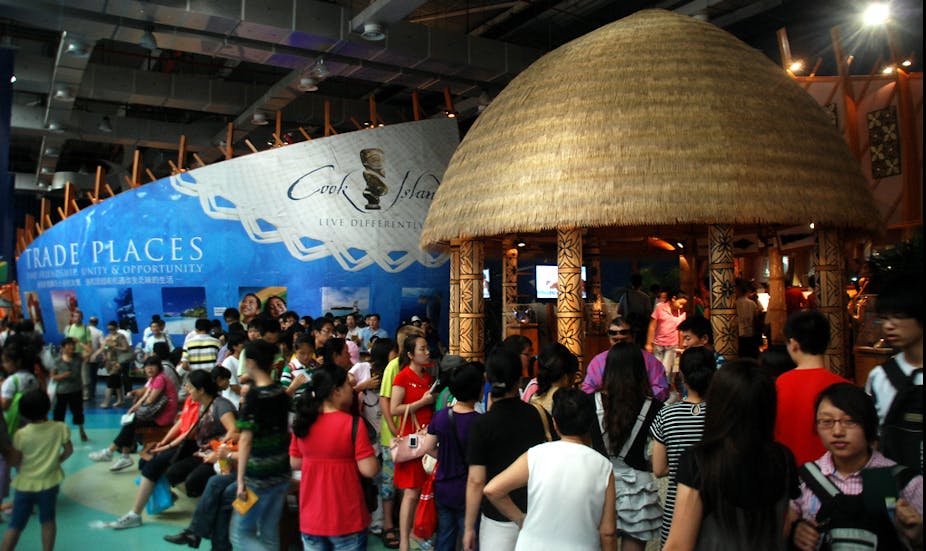China’s relations with its Pacific neighbours are nothing if not complex. Its trade in the region quadrupled between 1999 and 2006. And if it delivers all of the promised resources, it will become second only to Australia as the largest aid donor to the Pacific. But its investment, aid and migration patterns create new challenges.
Recent headlines have not been rosy. Chinese-run stores have been targeted in riots in Papua New Guinea, the Solomon Islands and Tonga.
Last week, the assassination of a Malaysian Chinese businessman in Port Moresby led to the police operations chief, Fred Yakasa, to speculate that “Asian crime syndicates” were operating in PNG.
The China “threat”
Strategic and security studies literature examines the impact of “new” Chinese investment and migration in the Pacific. Much of this binary analysis is concerned with the expansion of Chinese territorial influence, viewing it in terms of a “China threat.”
It is argued that this should be met with further military and aid investments, and a closer relationship with the other side of the binary, the United States.
It reminds me of a doomsday website searching for signs of the impending rapture. Clues to moral ruin are found. Anecdotal portents of doom are totted up. China is deemed to be “no longer a force for good in the Pacific”, an analyst from the Lowy Institute recently concluded.
Elsewhere, Joshua Kurlantzick’s influential book, Charm Offensive, outlines the rise of China’s “soft power”, and laments that this will “erode the labour and environmental standards in other countries.” The merit of the status quo in the political economy of development in the Pacific is unquestioned.
The diplomatic challenge
China often appears as a panda or dragon. It secretively gives out aid, corrupts weak Pacific governments, and engages in a cloak and dagger game for diplomatic recognition with its nemesis, Taiwan.
While a revival of diplomatic rivalry can never be ruled out, Taiwan’s ruling KMT party has reached an accommodation with the Chinese regime to abandon competition.
The Taiwanese public and media have also tired of the sordid sport of bribing Pacific leaders.
Work on the ground
But the reality of China’s engagement with the region is more complex and interesting. Managers of the Ramu mining project in Madang, Papua New Guinea protest a lack of state support, even though they are a large, Beijing-based state-owned enterprise.
This challenges assumptions that Chinese resource companies always receive central government support in the form of complementary aid and concessional loans.
Examination of their operations in Madang reveals not a monolithic structure, but a clutch of state-run and semi-private contractors with financial autonomy and different work cultures.
Attempts to undermine labor and environmental standards (often by the contractors, rather than the parent company) have met resistance from civil society groups, landowners and the legal system. The project has been stalled in the courts for over a year.
Chinese migration
And Chinese migrants sometimes struggle to thrive. The majority of those who move to PNG come from the same part of Eastern China, the semi-rural town of Fuqing.
The trend began in the early 1990s, when a failed construction project in Port Moresby led to several Fuqing workers finding themselves without work. It’s a common pattern.
A ditty on the migration centres of Fujian province captures the phenomenon: “Taiwan fears Pingtan, America dreads Tingjiang, Japan is afraid of Fuqing, Great Britain is scared of Changle, and the whole world fears Fujian”.
Their arrival in PNG arises from fading earlier waves of migration to Japan, North America, Australia and Argentina. These desired destinations now have fewer opportunities, higher costs of living, and punitive immigration regimes.
The Chinese away from home
China’s visible presence in the Pacific, many of whom are small traders who run trade and food stores, are dismayed by the lack of support and protection they receive from local Chinese embassies.
Following the riots in the Solomon Islands, a report by Guangdong Office of Overseas Chinese Affairs - the agency meant to protect such traders - blamed the riots on the “low quality” of the Chinese migrants themselves.
Fuqing migrants have been involved in criminal activities, but this could be characterized as “disorganized crime”. It is a world away from a crime syndicate.
Chinese engagement in the Pacific
Juxtaposing China as a “behemoth” ranged against “small” Pacific nations risks missing divisions of generation, class, ethnic identification, migration history and economic activity within and between Pacific nations.
It overlooks the diversity and agency of developing country actors when they engage with foreign investment, where foreign investors can often find themselves the pawns in complex, pre-existing conflicts over land and social relationships.
China, in all its forms, is here to stay. Let’s engage with the reality.

